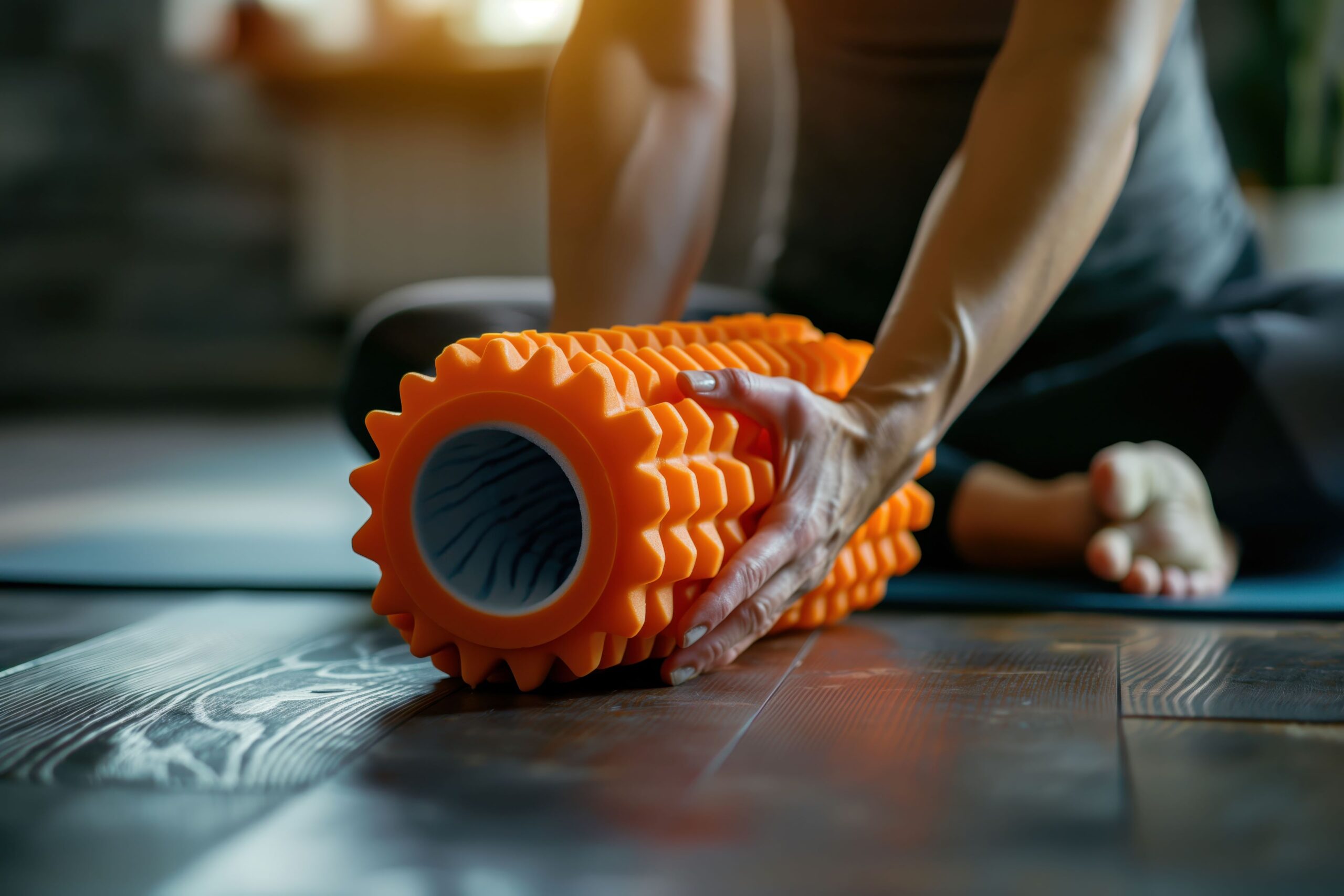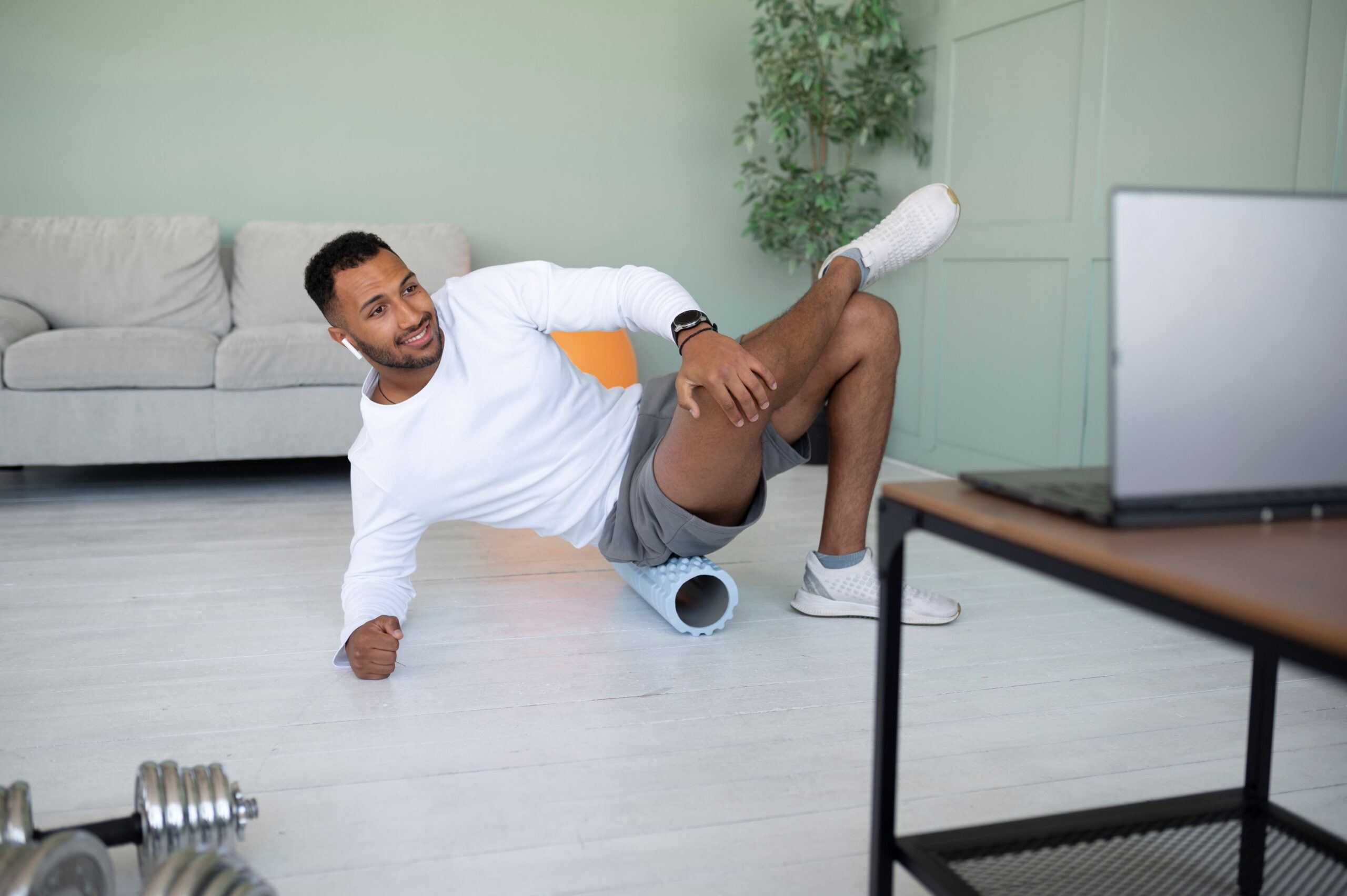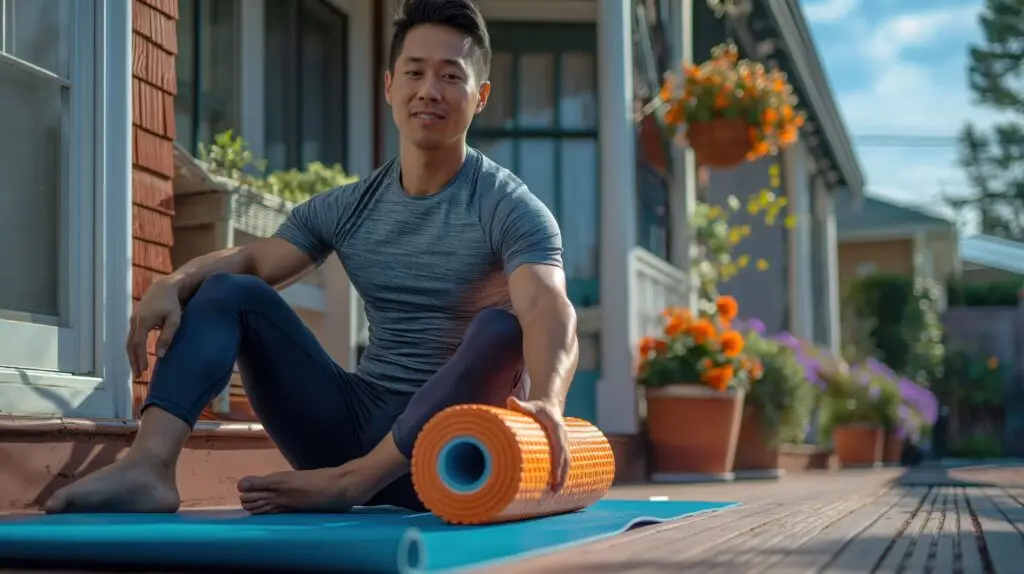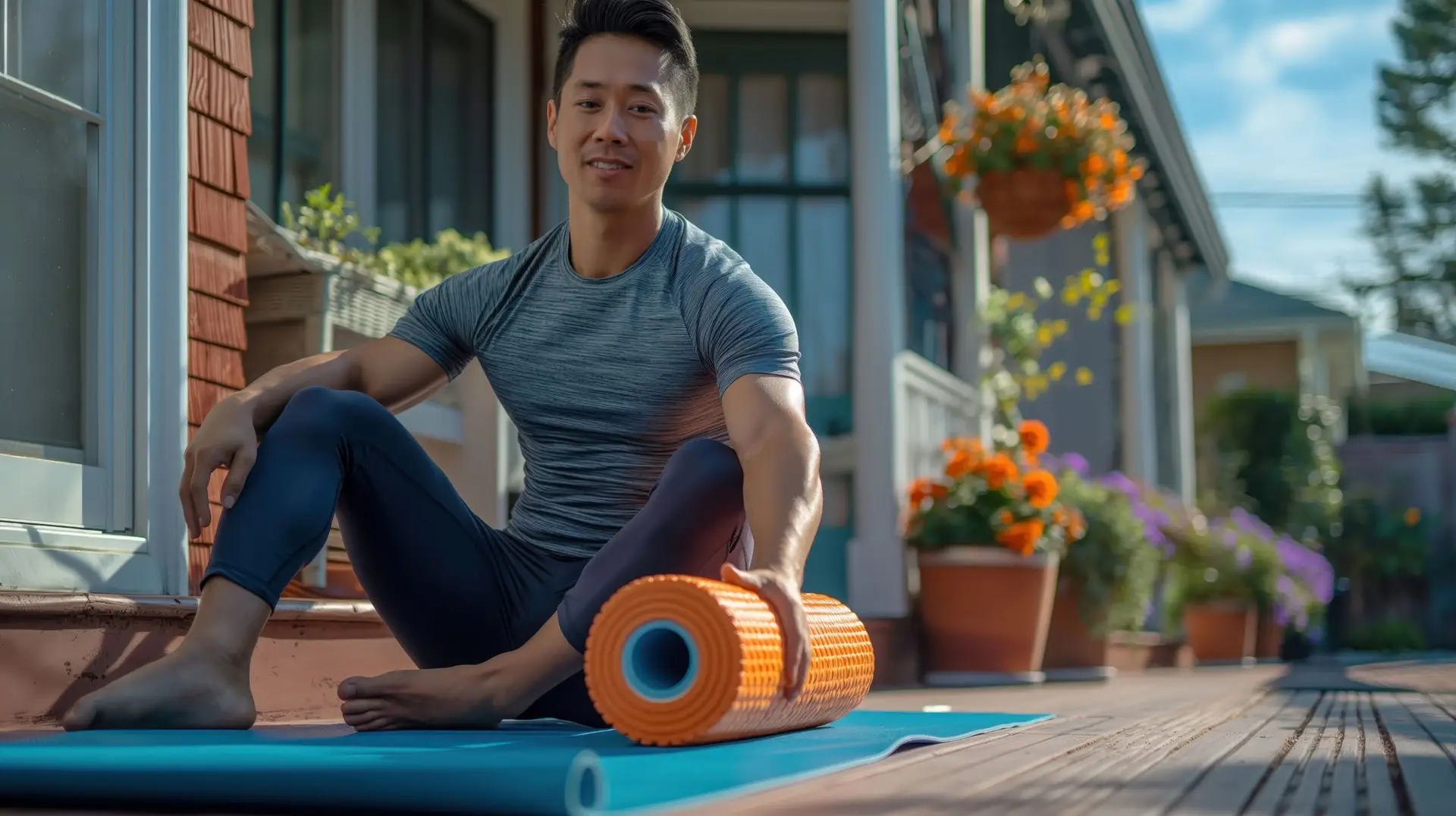Foam Rolling Can Boost Your Fitness Routine!
Self-myofascial release (SMR), aka foam rolling, is a great way to address common workout issues like muscle soreness, pain, and tightness. Although SMR’s popularity has grown recently, as a fitness trainer in the early 2000s, I regularly included it in fitness programming for my private clients. This article lists five reasons you need to include SMR in your workouts.
What is a foam roller?

A foam roller is a lightweight, cylindrical padded tube made of different types of foam depending on the desired texture. Textures include polyethylene, expanded polypropylene (EPP), and ethylene vinyl acetate (EVA). Rollers also have a reinforced plastic core to maintain form and density.
Foam rollers are specialized equipment that helps restore muscle mobility, flexibility, and circulation. They also eliminate muscle knots and reduce soreness.
SMR
SMR is a self-massaging technique that uses your body weight to pressure your muscles by gently rolling back and forth over the problem area. The foam roller’s pressure pushes onto the connective tissue called the fascia, which attaches, secures, encircles, and divides muscles underneath the skin.

How does SMR with a foam roller benefit me?
The International Journal of Sports Physical Therapy study has shown that SMR improves joint range of motion, enhances post-exercise muscle recovery, and reduces delayed-onset muscle soreness (DOMS).
The study also found that foam rolling improves muscle performance, significantly improves post‐exercise muscle recovery, and may help prevent injury and support current injuries. Other benefits included in the study were enhanced muscle function, reduced pain, and muscle relaxation.
As a result, SMR can benefit from physical therapy and post-therapy sessions. Ask your physical therapist and other health professionals about any benefits of self-myofascial release.
SMR and Foam Rolling
Foam rolling is easy to do, can be performed at home, and positively affects muscle tension instantaneously. Anyone can perform SMR, from fitness beginners to weekend warriors to advanced fitness enthusiasts to professional athletes.
Be sure to consult with your health professional before beginning any exercise. First, however, consult with a certified fitness professional or physical therapist to discuss if SMR is right for you. Other considerations are foam roller size, texture, density, and personal nutrition and hydration.
How to Perform Self-myofascial Release (SMR)
Iliotibial band (IT Band)
Lie down on the floor on one side. Place the foam roller at the base of your hip and begin rolling from your hip toward the top side of your knee. Gently put pressure on the area, and you will find very tender areas of discomfort. Try to keep gently pressing on these areas for 30-45 seconds until the discomfort is lowered to around 25%.
Hold for 30-45 seconds.
Piriformis
Sit directly on the foam roller and adjust your left glute until the outer hip is pressed on top of the roller. Cross your left leg and begin applying pressure on the most tender areas. Roll the region from your hip and upper thigh to the lower back, remembering to hold and apply pressure to the most tendered areas. Hold for 30-45 seconds. Repeat the same on the opposite hip and side.
Hold for 30-45 seconds.
Neck and Shoulders
Please lay the foam roller horizontally on the floor and then lie across the top of the roller with your shoulders matching. Cross your arms in front of you as if giving yourself a big bear hug. Reach around until each hand is touching the opposite shoulder blade. Raise your hips off the floor. Begin moving your body so that the roller gently moves from the edge of the shoulder top and back toward the bottom of the shoulder blades.
Hold for 30-45 seconds.
As before, hold and lightly press your body against the foam roller. Lean on one side to isolate the muscles, then lean toward the opposite side. You will begin to hear and feel gentle popping as the joint stiffness begins to subside. Hold on to the discomforting area for 30-45 seconds.
Foot SMR
Place a ball on a wall and lean your chest into it. Move your chest in a small circular motion towards the bottom of your collarbone.
Hold for 30-45 seconds.
Place a ball (e.g., tennis, lacrosse, gold, or physical therapy massage ball designed for SMR) on the floor. With your bare foot, gently roll the ball around your foot from the toes to your heel, from side to side from the outer edge of your foot to the arch, and all around. Hold and apply pressure to the painful areas for 30-45 seconds.
The video links below include additional foam rolling techniques for different body parts.
- How to Foam Roll (Massage) Entire Body with Good Form & Technique
- Full-Body Foam Rolling Exercises | A Complete Guide
This article is for informational purposes only and does not endorse any product, manufacturer, or retailer. Self-myofascial release (SMR), aka foam rolling, has effectively addressed issues like muscle soreness, pain, and tightness. Although SMR’s popularity has grown recently, as a fitness trainer in the early 2000s, I regularly included it in fitness programming for my private clients. This article lists five reasons you need to include SMR in your workouts.
Start Today
As you can see, foam rolling has a fantastic benefit and should be started immediately. Below are five reasons to start today.
- Enhances Range of Motion and Flexibility As discussed earlier, foam rolling helps restore muscle mobility, flexibility, and circulation in the muscles and fascia. Thus, it reduces the chance of injury and increases the effectiveness of your fitness routine.
- Improving Muscle Recovery SMR significantly improves post‐exercise muscle recovery by delivering nutrients and oxygen, reducing recovery time after workouts. As a result, a practical SMR session will encourage you to return to your fitness routine quicker. (Muscle Physiology – Introduction to Muscle, n.d.)
- Diminished Muscle Soreness, Self-myofascial release self-massages help lessen delayed-onset muscle soreness (DOMS) by dissolving microscopic adhesions in the fascia and tendons, thus promoting increased muscle circulation.
- Develop Muscle Function Consistent SMR routines can upgrade overall muscle function. By adding SMR to your fitness program, you will see expanded capability in muscle development, strength, flexibility, joint mobility, and enhanced overall body functionality.
- Stress Reduction Foam rolling excites the parasympathetic nervous system and surprisingly affects the release of serotonin while simultaneously lowering the stress hormone cortisol.

Conclusion
Seff Mayo fascial release foam rolling can significantly enrich your overall fitness experience. SMR should be incorporated into your fitness program and can benefit post-physical therapy recovery. Have you ever tried foam rolling? Let us know how it worked for you in the comments section below.
Foam rollers come in different sizes and textures. Contact your physical therapist for the proper recommendations to suit your needs. This article is for informational purposes only and does not endorse any product, manufacturer, or retailer.
Before starting any new health and fitness program or taking supplements, it’s crucial to consult with your healthcare professional. They can provide personalized advice based on your medical history and current health status, ensuring your new regimen is safe and effective. This step helps prevent potential health risks and ensures that any changes you make are beneficial and sustainable in the long run. Your healthcare professional is your best resource for making informed decisions about your health and wellness journey.
Source
-
- The reasons why foam rolling needs to become part of your routine
- 5 Scientifically-Backed Benefits of Foam Rolling
- Should You Try Foam Rolling? – Cleveland Clinic Health Essentials
- The 8 BEST Foam Rolling Exercises (10-Minute Full Body Foam Roll Routine)
- The BEST 5-Minute FOAM ROLLER Routine You’ll Ever Do
- FOAM ROLLING – Full-Body Routine and Tips (14 Body Parts)
- Should You Try Foam Rolling? – Cleveland Clinic Health Essentials
- Foam Rolling: Before or After Workout? (Answered & Explained)
- To perform self-myofascial release on the iliotibial band
- How to do Self Myofascial Release (SMR) Piriformis
- Self-Myofascial Release Techniques for Neck and Shoulders
Bing Copilot, AI software, GPT-4, partially generated this article. Endless Summer Fitness will continue experimenting with similar software; however, our author will create most articles and fitness programs.




2 thoughts on “5 Reasons Why You Need to Foam Roll”
Hey there just wanted to give you a quick heads up.
The words in your content seem to be running off the screen in Firefox.
I’m not sure if this is a formatting issue or something to do with internet browser compatibility but I thought I’d post to let you know.
The design look great though! Hope you get the problem fixed soon. Many thanks
Hey, thank you for the feedback! I appreciate it. I will be looking into that right away.